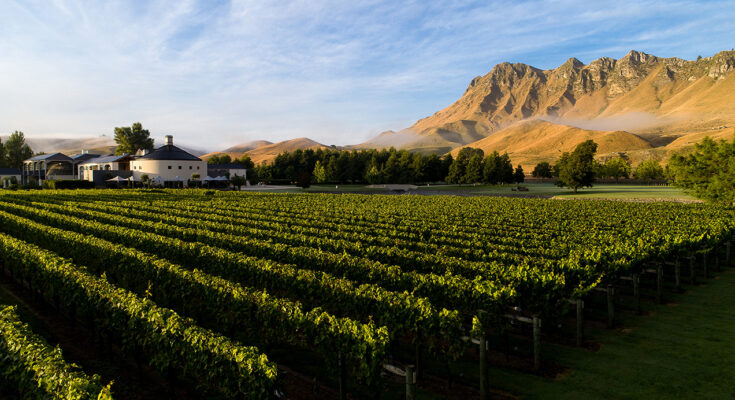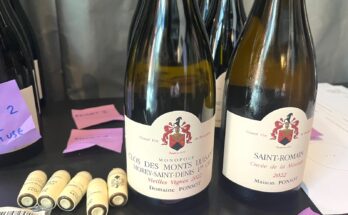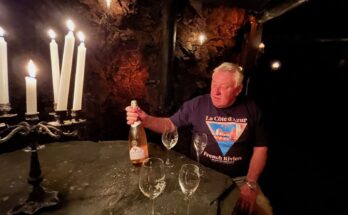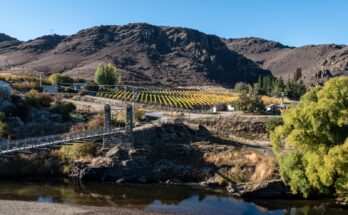It’s another lovely day in Hawke’s Bay when I drive down the road to have a look at Craggy Range at the beginning of December. I’m long overdue to spend some time at this beautiful wine estate, and have set aside a good couple of hours to take in everything this place has to offer.
I take a peek into the restaurant and then meet Michael Bancks, the Customer Experience Manager in the superbly appointed Cellar Door, with it’s plush seating booths and warm, welcoming ambiance. Michael brings out a glass of rosé and asks me if I know the background to the Estate and the history.
Michael Bancks: Mary and Terry Peabody are originally from the USA, eloped from there to Australia in 1965, and from there they’ve had a lot of success with heavy industry – cement, trucks and waste management. The family made a group decision about creating a long-term family legacy in a business that was slightly more romantic! So the idea was born of a wine business that could be passed on to future generations, and they looked around the world at some of the great wine regions. Obviously in Australia where they were based, but also Napa and Bordeaux. There was a chance meeting with Baron Eric Rothschild in Bordeaux and he talked about the New World having the best possibilities to create this legacy. There weren’t inheritance tax laws, issues with appellations and the restrictions that come with those, and they could really start from scratch.
Steve Smith MW presented this property to them. It was known as the Craggy Range Farm, and Steve had driven past many times going fishing up the valley. It his mind it was a stunning property, and a great name ready-made for a brand! There are about two hectares of Chardonnay panted here, plus our restaurant, cellar door, owners house and then the accommodation units that can sleep up to 38 people. All the finance, marketing, sales support – the admin – is run from this site – the Giants Winery – as well. And then we have our Gimblett Gravels winery and vineyards where we have 100 hectares – the single largest piece. We also have 100 hectares down in Martinborough which was developed in 1999-2000. However, two years ago we just invested in another 200 hectares on Te Muna Road – The Donald and McCloud farms, which will essentially be a continuation of our top terrace.
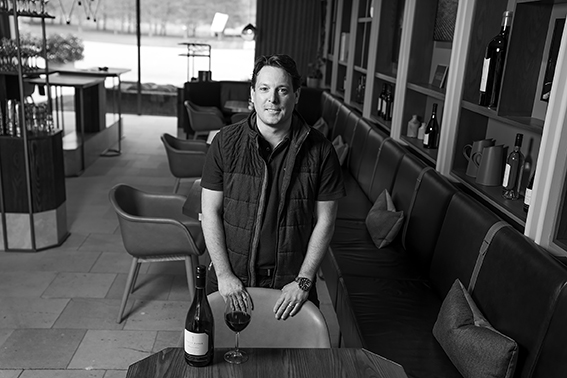
WineFolio: Will you look to open a centre down there?
MB: We may open something down there in the future. At the moment we’re very focussed on Hawke’s Bay but as we grow that footprint, Martinborough becomes a bigger part of our discussion. At the moment the focus is developing the vineyards and creating some wines from those sites before we embark on any more hospitality.
We focus on Sauvignon Blanc and Pinot Noir down in Martinborough, and here in Hawke’s Bay it’s all about the Syrah, Bordeaux blends and Chardonnay.
WF: Any ups and downs?
MB: It has always been about trying to create a global brand, so the wines can sit comfortably on the world stage. So pre-Covid we were exporting 90% of our production and we’ve really focussed on the classic markets which appeal to most New Zealand exporters – the US, UK and Australia. As most of those have been in lockdown over the last 6 months, it certainly has created some challenges to the business, from where we’ve been selling our wines. We’ve always had a desire to have our wines served in the best restaurants around the world. So an on-premise focus rather than retail; and that becomes tricky when those restaurants are closed. So we are looking at where and how we sell our wines. We’ve never really played much in that retail space, but this a great opportunity to evolve into that.
WF: What do you think is the ‘next big thing’ that the world will discover about New Zealand wine?
MB: At Craggy Range it’s definitely about two key wines. We’re really excited about the Syrah from the Hawke’s Bay, and Pinot Noir from Martinborough. Sauvignon Blanc is definitely a big part of what the world knows about New Zealand, and roughly 60% of our wine is Sauvignon Blanc. So it’s leveraging off the success of that in order to open doors. The vast majority or our production is Sauvignon Blanc, although we are different in that ours is from Martinborough. That’s become a little bit different from the classic Marlborough story, and we do have a small vineyard there.
We aim to have the wines that are terroir-driven and express where they come from. With the footprint growing in Martinborough there comes a bigger story about what we do from that region. Pinot Noir is where we’ve got the opportunity to really grow. Over the first 20 years we’ve made some really interesting expressions of Pinot Noir from Martinborough and getting a lot of traction. Looking at Central Otago and Martinborough, they are wine regions that started roughly around the same time. Martinborough doesn’t have the Queenstown effect. It doesn’t have the adventure tourism, the beauty of the Remarkables, Lake Wakatipu.. and it’s not the most southerly wine region in the world. Imagine if Martinborough had all that extra appeal attached to it.
When the Fine Wine classification was first created it was primarily Martinborough Pinot Noirs that were in those first 47 wines that were selected. Martinborough is to Wellington what Waiheke is to Auckland – not too far away and a great weekend trip.
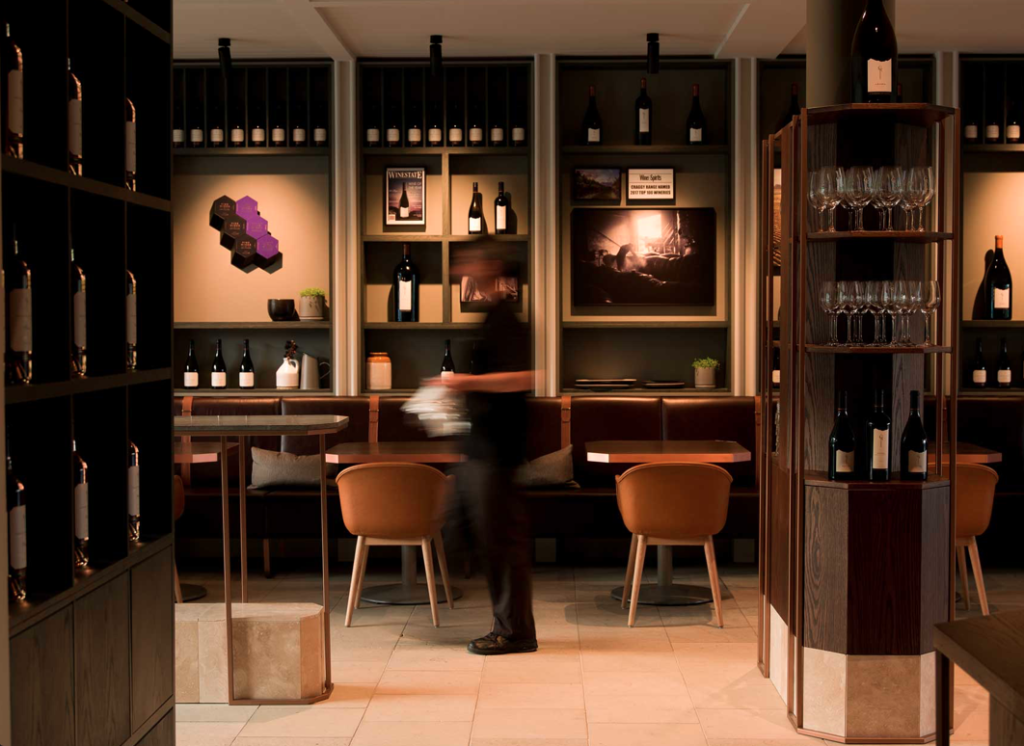
The Cellar Door at Craggy Range offers options relative to how deep a customer wants to dig into what Craggy Range is and what they do. The Cellar Door was renovated three years ago, with the idea to move away from the ‘belly-to-bench’ style of tasting where everyone clambers behind one counter. It’s not necessarily the best environment to engage with people and to really give them a personal experience. Craggy Range looked to sit down and spend more time with people – with all tastings now seated.
There are now ten or so tables in the Cellar Door, a private Library space, but also a courtyard. With 3 different levels to the tastings and looking at both regions – with a white and a red from each region, and depending on the time of year – certainly coming into summer the rose will be in the tasting. There are such a range of styles – and colours – and plenty of varietals that make nice rosé. Craggy Range use Tempranillo and Syrah for their rosé – this is the second vintage with that combination. It’s fruit driven without being sweet, dry and light in colour. They have a clear direction but open to evolution. An example would be the transition to organic farming in the vineyards – including a biodiversity planting program in Martinborough, in blocks that aren’t ideal for grape growing but will be planted with natives.
The Riesling comes from a tiny block in te Muna – well below 1% of total production. Mostly for the Cellar door and the restaurant where the food and wine matching is important. Off dry in style with about 9g/l residual sugar to temper the acidity that comes from the cool evenings in Martinborough. Lime acidity, crunchy Granny Smith apple – juicy, aromatic, bright and crisp with a balance of acid to sugar as the key. When it’s on tasting, it is the number one white wine seller.
There’s also a Marlborough Sauvignon Blanc. Michael comments “The world has a great affinity with this style – greener, grassy spectrum… we try not to stuff it up”.
They have a desire to have the wines served in the world’s great restaurants, so do think about how the wines will pair with food. The Te Muna Sauvignon Blanc has a softer acidity with a riper, more textural palate. It will evolve to be a blend of three sites on Te Muna Rd and will be more of a regional style. Pinot Gris is also on Te Muna Rd but again a very small block, and again is only available at the Cellar Door and restaurant. Dry and lots of texture is what they look for. 60% whole bunch which adds the phenolics, and only 2 g/l RS. Floral and pretty, exotic spices. Lush but not just flabby sweetness. Food friendly. Pinot Gris has often been inoffensive, easy drinking.
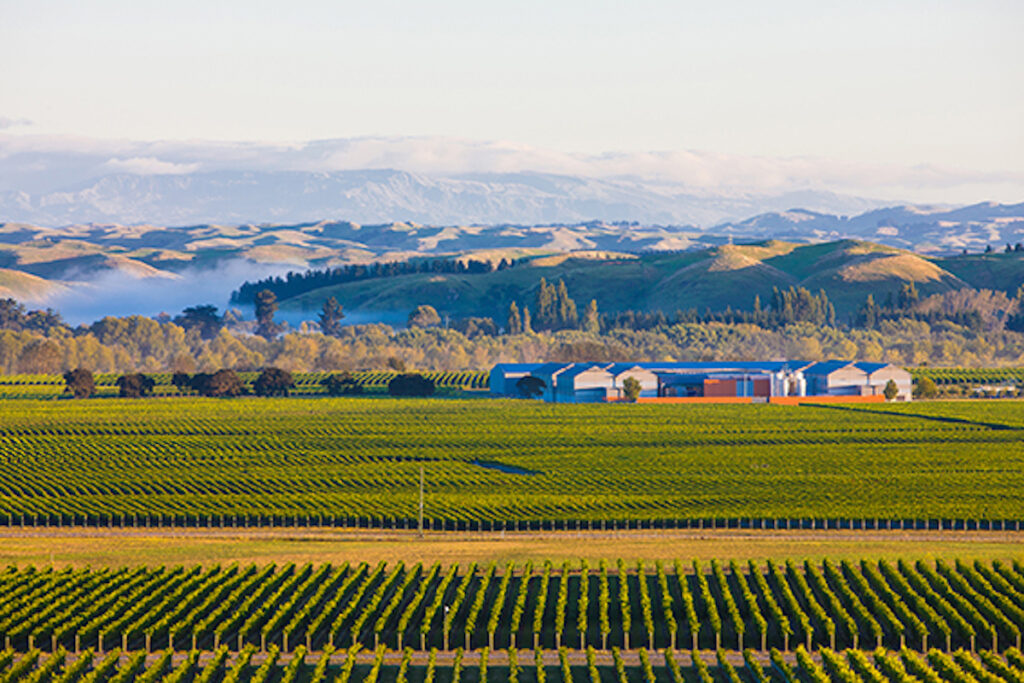
We take to musing over what constitutes a special wine – if you were used to drinking champagne all the time, then the ‘special’ becomes Cristal or Dom Perignon. If you drink Lindauer, then something like a good NZ Methode would be special to you. Michael explains that for CR they have to look at the costs, then derive a price to sell the wines at. You have to make a profit, but it is also down to where you want to position your brand as well. As long as your brand matches in the tier that you are trying to play, then it should work. We talk about Longview where the winery was taken over and the ‘White Diamond’ wine they sold for $15 was now on sale for $300 – so what’s it worth?
Two Chardonnays arrive for tasting and from two different vineyards – one of the vineyards is the Kidnappers vineyard, a coastal vineyard between Elephant Hill and Clearview, out at Te Awanga; and then ‘Les Beaux Cailloux’ which translates from French as ‘the beautiful stones’ and it comes from the stoniest part of the Gimblett Gravels site.
MB: In the summer we’ll see quite a big difference in temperatures – sometimes 5 or 6 degrees. Even at the Giants Winery you can feel a sea breeze come in around 3 o’clock. It extends the ripening period – can be 2-3 weeks longer before ripening than Gimblett Gravels. That tends to be the first site picked in Hawke’s Bay and it’s usually the first few days in March, compared to the middle of the month for the coastal site. The colour of the fruit tends to be different as well – the Gravels fruit is more golden whereas the coastal Chardonnay can stay quite green.
We want the wines to speak of where they come from, so we’re not looking for a big rich wine from our cooler site. Brighter, lighter and crisper and driven by the fruit with an acid backbone. Fermenting in a mixture of stainless steel and 500 litre oak puncheons, with only 10-15% new oak. And no malolactic conversion so we keep that malic acid, but a little batonnage just to get that texture. We talk about elegance and balance through all our wines, but it’s with chardonnay that that is really pertinent. The balance of the fruit, oak, acidity working together across the palate.
The Gimblett Gravels ‘Les Beaux Cailloux’ Chardonnay is using 100% barrique, about 40% new oak, full malolactic conversion that gets a little richer, fuller and intense. We base our picking decisions on that backbone of acidity, and we layer our Chardonnay from there, building complexity in layers. The vines were in a central block in the vineyard – Block 18, but they had leaf roll virus that could threaten the whole site, so were pulled out and replanted with Syrah. Now, the adjacent block has been chosen for the prestige wine and is being managed for that, but that didn’t happen overnight – it took a couple of years – and from 2011 to 2016 there was a gap in production of ‘Les Beaux Cailloux’. It shows real terroir in the style – with a flinty minerality and a struck-match reductive quality. We put in another 15 hectares of chardonnay in to our Gimblett Gravels site two years ago – pulled out a bit of Merlot and Malbec, and our Gimblett Gravels Chardonnay – the little sister to ‘Les Beau Caillou’ won Gold at the Hawke’s Bay Wine awards.
In ‘A Seat at the Table’ the documentary, it was pleasing to hear Jancis Robinson talk about the fact that she believed that it was Chardonnay that would put New Zealand at the fine wine table.
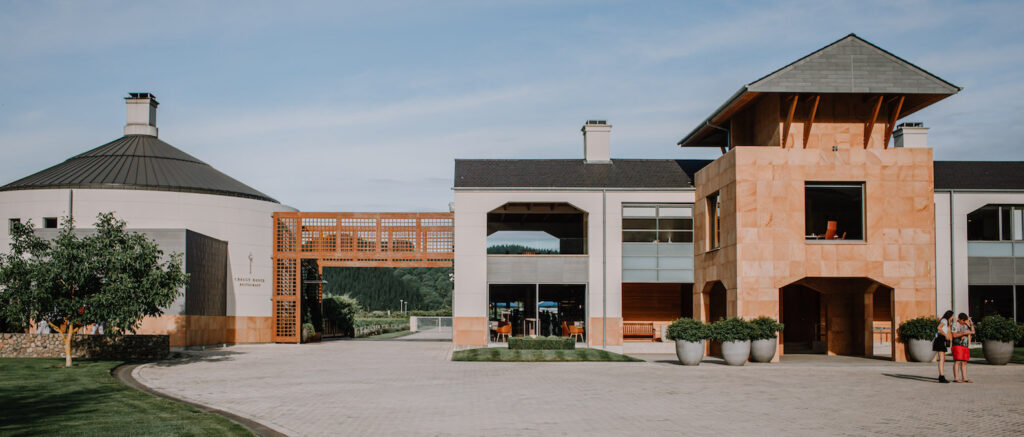
WF: It’s interesting, because Marlborough Sauvignon Blanc is so distinctive, and also I believe that Hawke’s Bay Syrah is as well. Yet arguably our best wine is Chardonnay!? However, I would temper that enthusiasm for New Zealand Chardonnay with a note of caution – that is – “is it distinctive enough?” It could easily pass for Grand Cru white Burgundy – and Kumeu River often does as you see in the film… but is that enough? Grand Cru burgundies already exist, so what’s our point of difference there?
MB: Exactly, but what I think, for me, is that Sauvignon Blanc has put us on the world wine table. But I think the ‘wine table’ and the ‘fine wine table’ are different areas. As with the Syrah and Shiraz conversation – we don’t want to recreate Australian wines – we want to make the great wine of New Zealand that speak of where we come from. What New Zealand has done so well with Pinot Noir is that the wines are so expressive and aromatic, juicy, vibrant and really intense. But they sometimes lack structure and palate weight, and it’s about evolving our New Zealand wine styles so that they keep that uniqueness, but have more complexity and layered.
WF: I love New Zealand Pinot Noir – I just think it’s class in a glass. I love the way it is getting real finesse now – not trying to blow your head off with a bomb of fruit and upfront flavours. I also think that Syrah is starting to walk side by side along that path – with much more subtlety and aromatic nuances.
MB: I think that vine age is key with Pinot, and having the understanding of the vineyard as well – how they perform and what they offer. We’ve noticed over the 20 years that we have blocks that are higher performing than others, and have adjusted our winemaking to show the best of those different sites. Back I the day we used to make 5 different Pinots from 5 different sites across New Zealand. We had fruit from the Zebra in Bendigo and the Calvert vineyards for example. In the early days Steve Smith was sourcing fruit from vineyards that had older vine material to give the winemaking team options to make better wines.
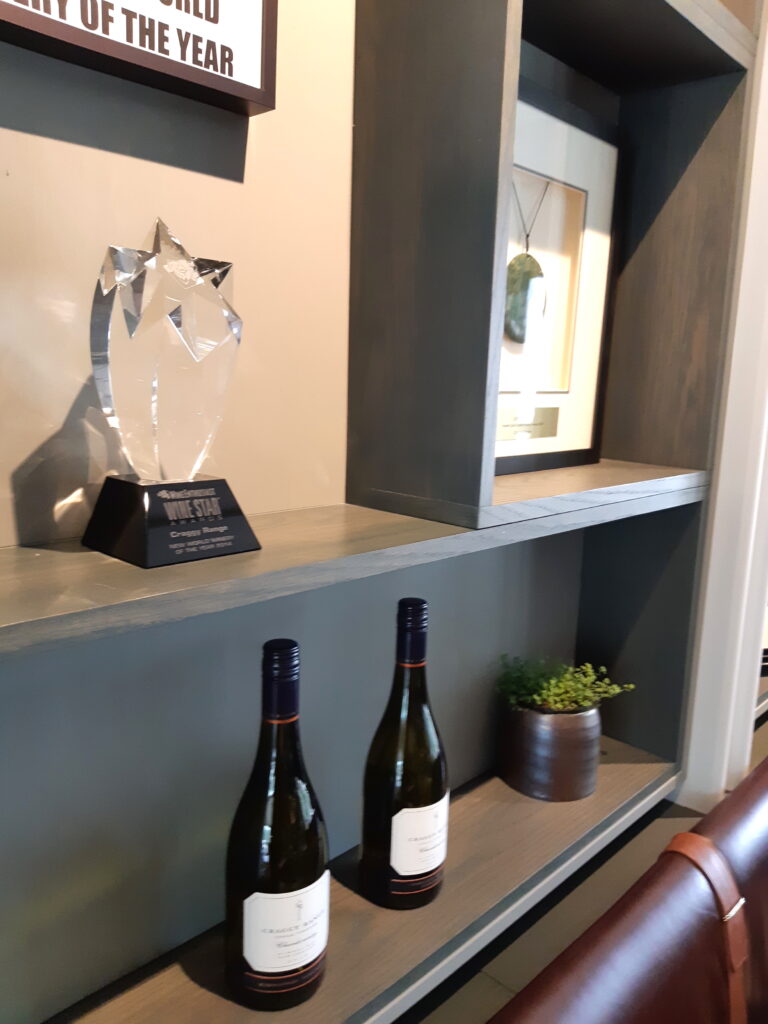
Our yields are quite different from our prestige wines to our family collection wines. Looking at 3-4 kilos per vine for our Family Collection, and then around 1 kilo per vine for our Prestige blocks. The winemaking is quite different here as well – with things like the whole bunch component. Looking at around 25% whole bunch for the Family Collection up to 45% whole bunch for ‘Aroha’
The new oak component sitting at 25-35% new oak. The key component in Martinborough wines is that forest floor flavour – ‘sous bois’ as the French would say. Often that’s a darker, earthier, bramble fruit profile rather than the bright, juicy red fruits. The evolution of whole bunch comes after 2011 – before that the fruit was destemmed. Intensely aromatic and pretty but with that texture to them as well. We have a variety of clones, including the gumboot clone, Abel – and our new plantings will include more of that Abel clone.
WF: It’s notable how many times I’ve picked out my favourites in a Pinot tasting and they turn out to be heavy on the Abel clone. I like its brooding, bruising nature – a swagger to it. Which is odd because I also value the ethereal qualities to some Pinot Noir too – it’s like Ying and Yang. I also like the story behind how the clone came to be in New Zealand. I know a lot of people in the wine industry get tired of those stories, but it’s a point of difference and of interest to others – not just international visitors, but many people who may be new to fine wine and don’t know that there are even different clones of one varietal of wine, and would be fascinated to hear about it? An overseas consumer may not know what ‘aroha’ means, too
MB: Te Muna translates to ‘secret place’ in Te Reo, and so we talk about that love for our secret place, and for Pinot Noir as well. The first vintage of ‘Aroha’ was 2006, and our original winemaker, Doug Wisor, died in a kitesurfing accident in 2004. He’d made some barrel selections and put a sample on Steve’s desk, labelled ‘my selection’ and said to Steve ‘we’ll have a chat about that next week’. He died the next day, and Steve ended up bottling a small amount of the Chardonnay and also that Pinot – and he just put ‘My selection: Doug Wisor’ on the label. I think it’s the passion he had for life and for Pinot that leads us down this path – he was a big part of the early wines we made. In his honour we created the ‘Doug Wisor Memorial Scholarship’ and every year a young American winemaker will do vintage at Craggy Range, then go and spend time with the Family of Twelve wineries. We also named the Syrah Trophy at the Hawke’s Bay Wine Awards the ‘Doug Wisor Trophy’, and we won that for the first time this year with the ’19 Syrah.
As you may have noticed – screwcap. For 2018 we have moved our entire portfolio across to screwcap. For the last 15 years we’ve been trialling cork, screwcap and diam for the prestige wines. We’ve got to the place now where we’re completely comfortable that this is the best closure for our prestige wines.
WF: No! I didn’t notice! Maybe I’m just so used to seeing screwcaps now. What does the market think though?
MB: I think maybe ten years ago, the market would not have been so amenable to that change. But we’re really comfortable with the quality of the wines, having done those trials. We’re looking back at the wines and they’re evolving better. It’s not just that it’s cheaper. We’re a quality wine and we can guarantee it’s the best closure for them.
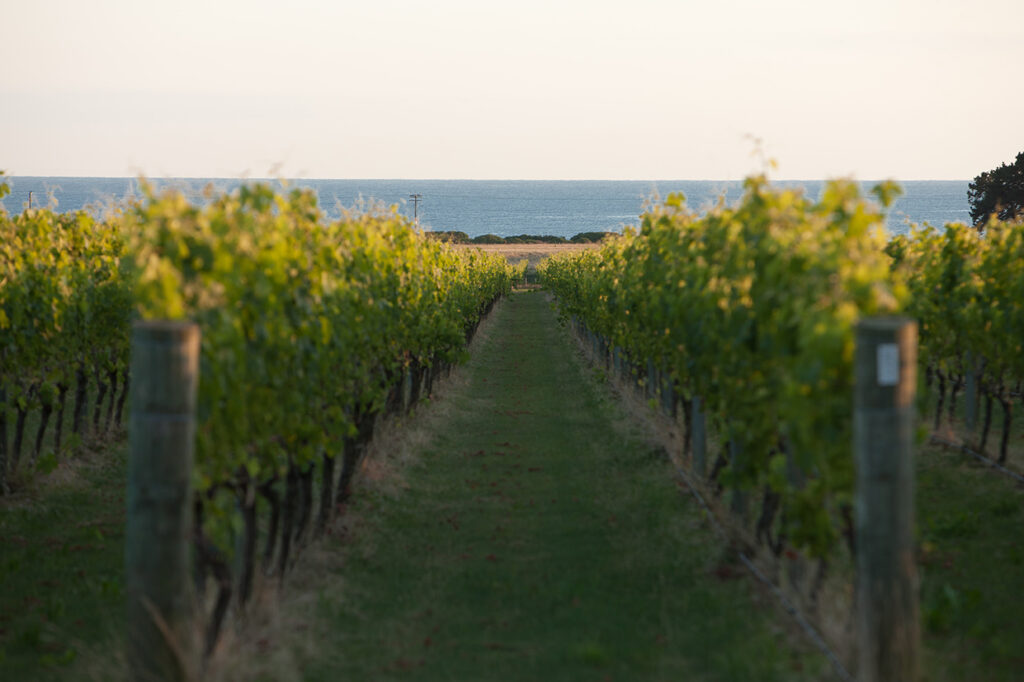
One of the things we’re doing at the Cellar Door is branching out in terms of not just showcasing the current vintage. So with ‘Le Sol’ and ‘Sophia’ at the moment we’re showcasing the ’13 and ’14, and can show how that’s evolving. The 2019 Syrah is the first of Julian Grounds’ red wines to be released, and kicking off with a trophy for Best Syrah. Doug was instrumental in pushing Syrah in the early days. Steve was really focussed on the Bordeaux varietals in Hawke’s Bay and up until that point it was what everyone felt was best suited to the Gravels. The clone we planted in 1998 was the MS clone – the Limmer clone – that’s believed is the one James Busby brought to New Zealand from Hermitage. We realised it had huge potential in the Gimblett Gravels so we pulled out some of the under-performing Cabernet, Merlot and Malbec and we’ve put another 22 hectares of Syrah in the ground – across a range of clones. The Gimblett Gravels wine is from across the blocks, but ‘Le Sol’ is still having a backbone of the original Block 14 of Syrah from back in 1998.
I often talk about ‘Le Sol’ as an iron fist in a velvet glove. It has intensity, power and a structure to it, but has an elegance, precision and prettiness to it at the same time.
Since 2016 we’ve started to do a bit more work with whole bunch in Syrah as well. In ’16 it was about 20% into ‘Le Sol’ and that evolution of how we make the wines. One of the interesting stories from the first ‘Le Sol’ that was made – Doug had wanted to keep the fruit out longer, and Steve kept saying “no, you need to bring it in’. In the end, Steve threw his toys and said “Fine do what you want, I’m going to take half the vineyard and pick it and make a wine, and you can take the other half and we’ll see who makes the better wine”. Eventually Steve had to concede that Doug had made the better Syrah – allowing that fruit to really get that little bit of dehydration and make a big, rich, concentrated style of Syrah which captivated the world wine scene and put us on the map. Doug got a couple of years with a bit more leeway in the winery.
WF: Do you find the big, prestige wines are often better the day after the bottle has been opened? I reviewed ‘Homage’ recently and had a bit of a struggle with it at home. I’d had it a couple of times – including at the winery. But I opened it and thought ‘OK, not sure here’ – then decanted it – couple of hours later thought “Better, but this doesn’t grab me as one of New Zealand’s greatest wines”. The next day – different story.
What this wine is like – the ‘Le Sol’ – is what I aspire to communicate to people. Not ‘more’, just ‘better’ or even ‘the best’. And how you can get there. I mean I haven’t got here overnight, of course not. I started on big jammy shiraz and supermarket plonk and sweet rosés… but if you can spend time in New Zealand’s wines and get to a point where your mind is opened to some of the nuances – the attention to detail that’s gone into making them… and to be honest doing tutored tastings at quality Cellar Doors and in decent fine wine shops, events etc – you’ll be in a position to try some outstanding wines at frankly pretty decent prices – on a world scale.
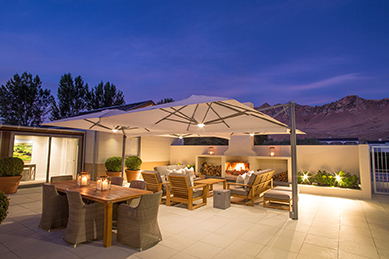
After our lengthy conversations about wine, I told Michael that I was keen to have a quick look around the immediate Estate grounds, and he was happy to take me on a quick trot around the accommodation options as well as the winery buildings. Exit the Cellar Door to a wonderful courtyard garden with beanbags under shady trees and a herb garden (used in the exquisite food in the restaurant) – this would be a lovely place to relax with a glass of whatever you found to be your favourite after a tasting session in the Cellar Door.
My background in New Zealand is in Tourism, so I am looking from a particular angle when it comes to closing the loop in a property like this – how can a couple on a special weekend away – maybe it’s a special birthday, an event or just a luxury escape – settle in and just let the cares of modern life ebb away and immerse in these luxurious surroundings.
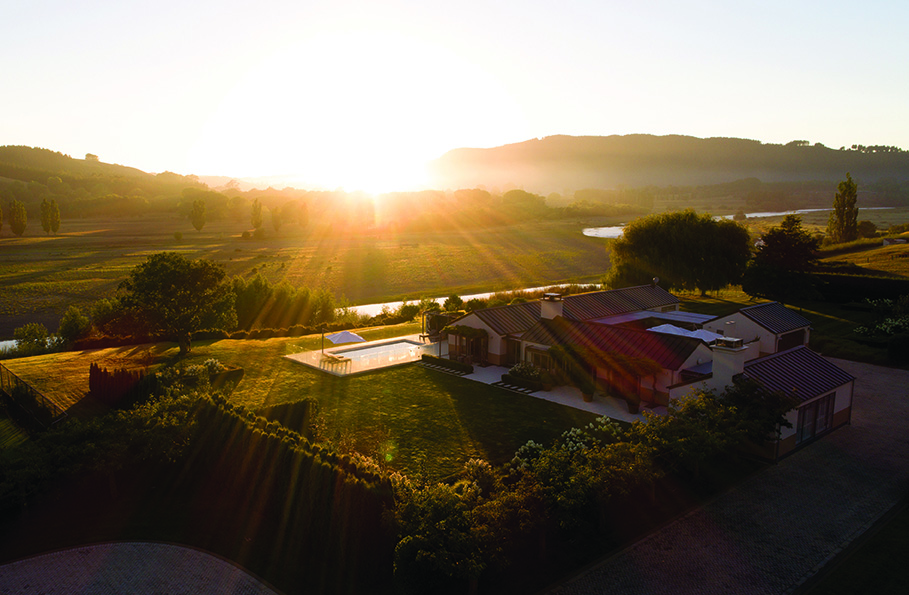
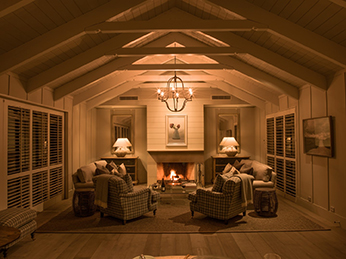
Happy to report that the places to stay lived up to the standard set in the Cellar Door. You’d be well pleased to stroll from your cottage through the manicured grounds, over for a drink, then pop next door to the award-winning restaurant, and back to put your feet up with a view over the vineyards/river/private courtyard (pick your choice). Check out https://craggyrange.com/accommodation/ for the options. Book ahead for the best deals and if there are events on locally.

